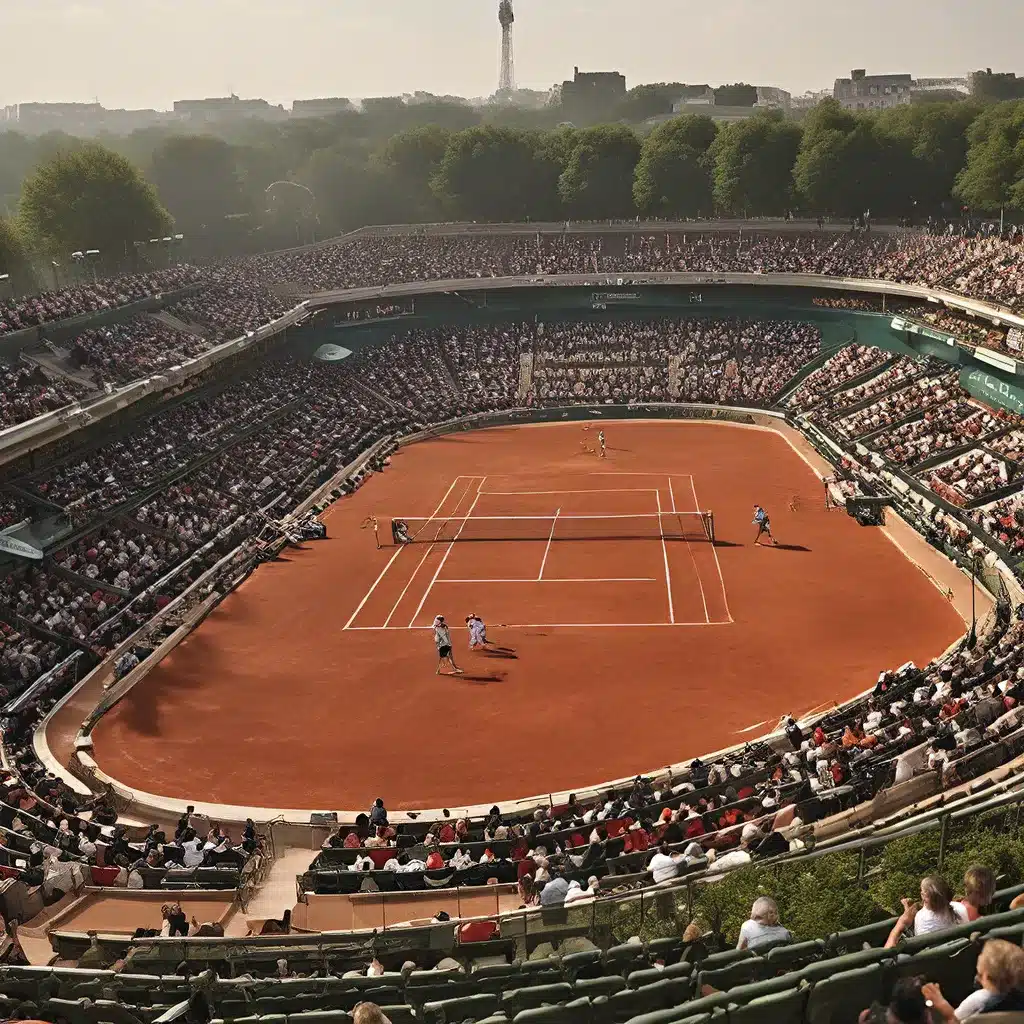
The Storied History of Roland Garros
Roland Garros, named after the pioneering French aviator, is a tennis stadium located in the heart of Paris, France. This legendary venue has been the epicenter of the prestigious French Open tournament since its inception in 1928. Over the decades, it has witnessed some of the most iconic moments in the sport’s history, cementing its status as a true tennis mecca.
The stadium’s origins can be traced back to the 1920s, when the Fédération Française de Tennis (French Tennis Federation) sought to establish a permanent home for the country’s premier tennis event. The chosen site, nestled in the Bois de Boulogne, offered a serene and picturesque setting just a stone’s throw away from the bustling Parisian cityscape. Construction began in 1928, and the newly christened Stade de Roland-Garros opened its doors to the public later that year.
From its humble beginnings, Roland Garros has undergone a remarkable transformation, evolving into a world-class sports facility that seamlessly blends tradition with modern amenities. Over the years, the stadium has been the stage for countless memorable matches, each one leaving an indelible mark on the sport’s history.
Architectural Grandeur and Innovation
The architectural design of Roland Garros is a testament to the French penchant for elegance and innovation. The stadium’s distinct clay courts, surrounded by lush greenery and iconic Parisian architecture, create a unique and visually striking environment that sets it apart from other Grand Slam venues.
One of the most notable features of Roland Garros is the Court Philippe-Chatrier, the main showcourt of the French Open. This expansive arena, with a seating capacity of over 15,000, is renowned for its intimate and electric atmosphere, where the roar of the crowd echoes off the stadium’s walls, creating an unforgettable experience for both players and spectators.
In recent years, the stadium has undergone a series of renovations and expansions to enhance the spectator experience and keep pace with the evolving demands of professional tennis. The addition of a retractable roof over Court Philippe-Chatrier, completed in 2020, has been a game-changer, allowing the French Open to continue uninterrupted even in the face of inclement weather.
The stadium’s strategic location, with easy access via public transportation, including Metro, RER, and Vélib stations, further contributes to its accessibility and convenience for both local and international tennis enthusiasts.
Legendary Matches and Champions
Roland Garros has been the stage for some of the most iconic moments in tennis history. Over the decades, the stadium has borne witness to the triumphs and heartbreaks of the sport’s greatest champions, solidifying its reputation as a hallowed ground for the game.
One of the most memorable moments in the stadium’s history was Rafael Nadal’s dominant performance at the French Open, where he has won a record 13 titles. Nicknamed the “King of Clay,” Nadal’s mastery of the surface and his unwavering determination have made him a fan favorite at Roland Garros, captivating audiences with his relentless style of play.
Other legendary champions who have etched their names in the Roland Garros record books include Björn Borg, Steffi Graf, and Serena Williams, each leaving an indelible mark on the tournament’s rich tapestry.
The stadiums’ intimate atmosphere and the unique challenges posed by the clay courts have also given rise to some truly epic matches, such as the 2022 men’s final between Rafael Nadal and Casper Ruud, which saw the Spaniard claim his 22nd Grand Slam title in a hard-fought battle.
A Parisian Spectacle and Beyond
Beyond its role as the home of the French Open, Roland Garros has also played host to a variety of other sporting events, solidifying its status as a multipurpose venue. The stadium has been a frequent host of the Davis Cup and Fed Cup competitions, as well as the 2024 Summer Olympics in Paris, where it will serve as a key venue for tennis and Paralympic events.
The surrounding area of Roland Garros has also become a hub of activity, with a bustling array of shops, restaurants, and cultural attractions that cater to the diverse interests of visitors. The Old Stadium Journey website provides a wealth of information on the stadium’s history, architecture, and the overall Parisian experience for tennis enthusiasts.
As the Paris 2024 Olympics draw near, the spotlight on Roland Garros will only continue to grow, with the world’s attention focused on this iconic venue as it hosts some of the most thrilling tennis and Paralympic events. The stadium’s rich history, architectural grandeur, and enduring legacy as a temple of tennis excellence ensure that it will remain a beloved destination for sports fans and cultural enthusiasts alike.
Conclusion
Roland Garros stands as a true testament to the enduring spirit of tennis, a venue that has captivated the hearts and minds of fans for generations. From its humble beginnings in the 1920s to its current status as a global sports mecca, this iconic stadium has witnessed the rise and fall of legends, the thrill of victory, and the agony of defeat. As the Paris 2024 Olympics approach, the world will once again turn its attention to this hallowed ground, eager to witness the next chapter in the remarkable story of Roland Garros.

